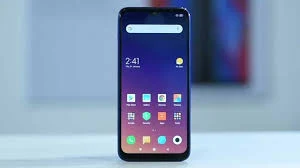HIGHLIGHTS
- The Redmi Note 7 Pro is available in two storage configurations
- The Neptune Blue and Nebula Red variants flaunt a gradient finish
- Redmi Note 7 Pro packs a 4,000mAh battery with Quick Charge 4.0 support
Xiaomi has yet again managed to send ripples throughout the Indian smartphone industry with the launch of the Redmi Note 7 and Redmi Note 7 Pro. The more feature-packed offering of the duo, the Redmi Note 7 Pro, packs some remarkable hardware for its asking price, including an octa-core Qualcomm Snapdragon 675 processor, a 48-megapixel rear camera, a large 4,000mAh battery with fast charging support, all encased in an attention-grabbing body. At its price, there is hardly any other phone in the market that can match the hardware prowess of the Redmi Note 7 Pro, at least on paper. Does that translate to a smartphone experience that can outshine offerings from other brands? Let's find out in our in-depth Redmi Note 7 Pro review.
Redmi Note 7 Pro design
The Redmi series of budget smartphones has traditionally stuck with a generic design language that hardly stands out from the crowd, but the Redmi Note 7 Pro marks a stark departure from that boring design philosophy. Xiaomi has opted for a more premium glass-sandwich design that looks stunning, while also making sure that the smartphone is durable. At first glance, the latest offering from the Redmi sub-brand looks much more expensive than it actually is, and that's certainly a good thing.
The Redmi Note 7 Pro has Gorilla Glass 5 on both sides, while a plastic rim runs around the edges. The glass rear panel is curved and blends seamlessly with the rim, which makes the device feel good in hands. We have the Space Black variant for review, and to describe it in one word, it looks gorgeous. We quite liked the reflective finish and the minimalist silver Redmi logo. The sides have a glossy coating of black paint, which creates an aesthetic uniformity with the shiny rear panel.
On the downside, the device attracts smudges and dust particles quickly, and they stand out against the black colour. Then there is the huge camera bump that is among the thickest we've seen on a smartphone recently. These are the two tradeoffs that users will have to live with unless they use a protective case. The Redmi Note 7 Pro also comes in Neptune Blue and Nebula Red options, both of which have metallic gradient designs.
Having Gorilla Glass 5 gives us some level of assurance that the device should withstand a few accidental drops without shattering. Xiaomi also states that the Redmi Note 7 Pro has reinforced corners to protect the screen from cracking.
In addition, the company says that the internals of the Redmi Note 7 Pro are protected from liquid damage to an extent, thanks to water-tight seals and the use of rubber insulation for the SIM tray, volume rocker, and power button. The company has used what it calls a P2i hydrophobic nano-coating, which is claimed to protect the smartphone against accidental liquid spills.
It is worth mentioning here that the Redmi Note 7 Pro can only handle minor liquid splashes; it is not water or dust resistant and does not have an IPxx rating. It would be best to refrain from dunking this smartphone under/ around water. Any damage caused by water exposure is not covered under the standard warranty.
The fingerprint sensor is located conveniently on the rear, but we found the volume buttons on the right a little too high to reach without adjusting the smartphone in our hands. Nonetheless, the power and volume buttons are “clicky” and provide satisfactory tactile feedback.
The Redmi Note 7 Pro has Gorilla Glass 5 on the front as well as the rear panel
The left side has the hybrid dual-SIM (Nano+Nano) tray which can also take a microSD card of up to up to 256GB capacity in place of a second SIM. The 3.5mm headphone jack sits on the top. accompanied by an IR emitter, while the speaker and USB Type-C port are on the bottom.
Up front is the 6.3-inch full-HD+ (1080x2340 pixels) LTPS In-Cell display, which has a 19.5:9 aspect ratio and a pixel density of 409ppi. There is a small notch at the top, or a “Dot Notch” in Xiaomi's words.
The colour reproduction of the display is good, and so are the viewing angles. Content on the screen was sharp thanks to the high pixel count. However, we noticed that the display is quite reflective and we had to keep the brightness above the 90 percent mark to comfortably use the smartphone under direct sunlight. You can adjust the display's colour temperature and contrast if you like.
There is a reading mode that makes the screen's colour tone warmer so it's easier to read content. Aside from manually enabling or disabling it, users can choose to create a custom schedule to automate it.






